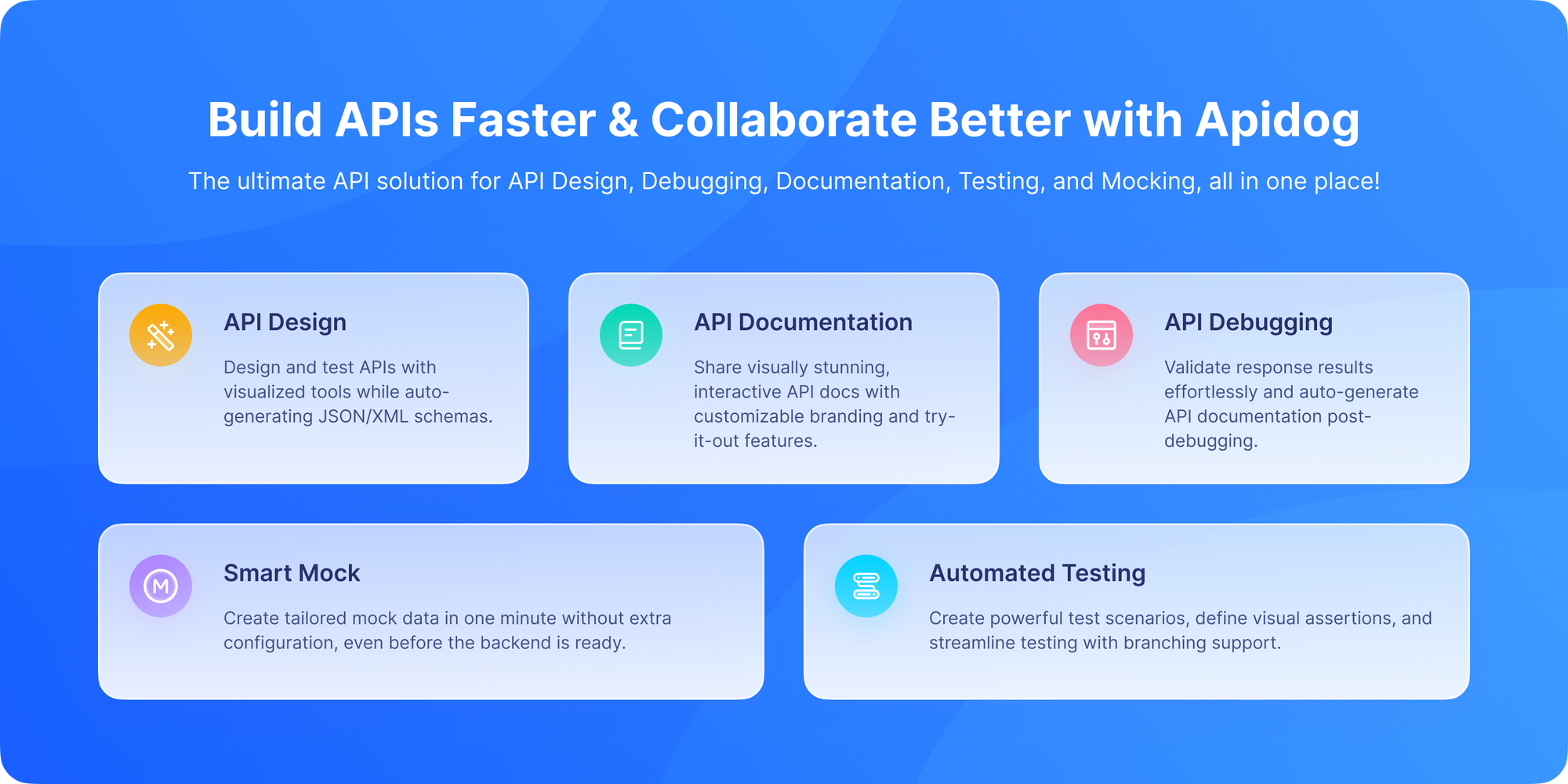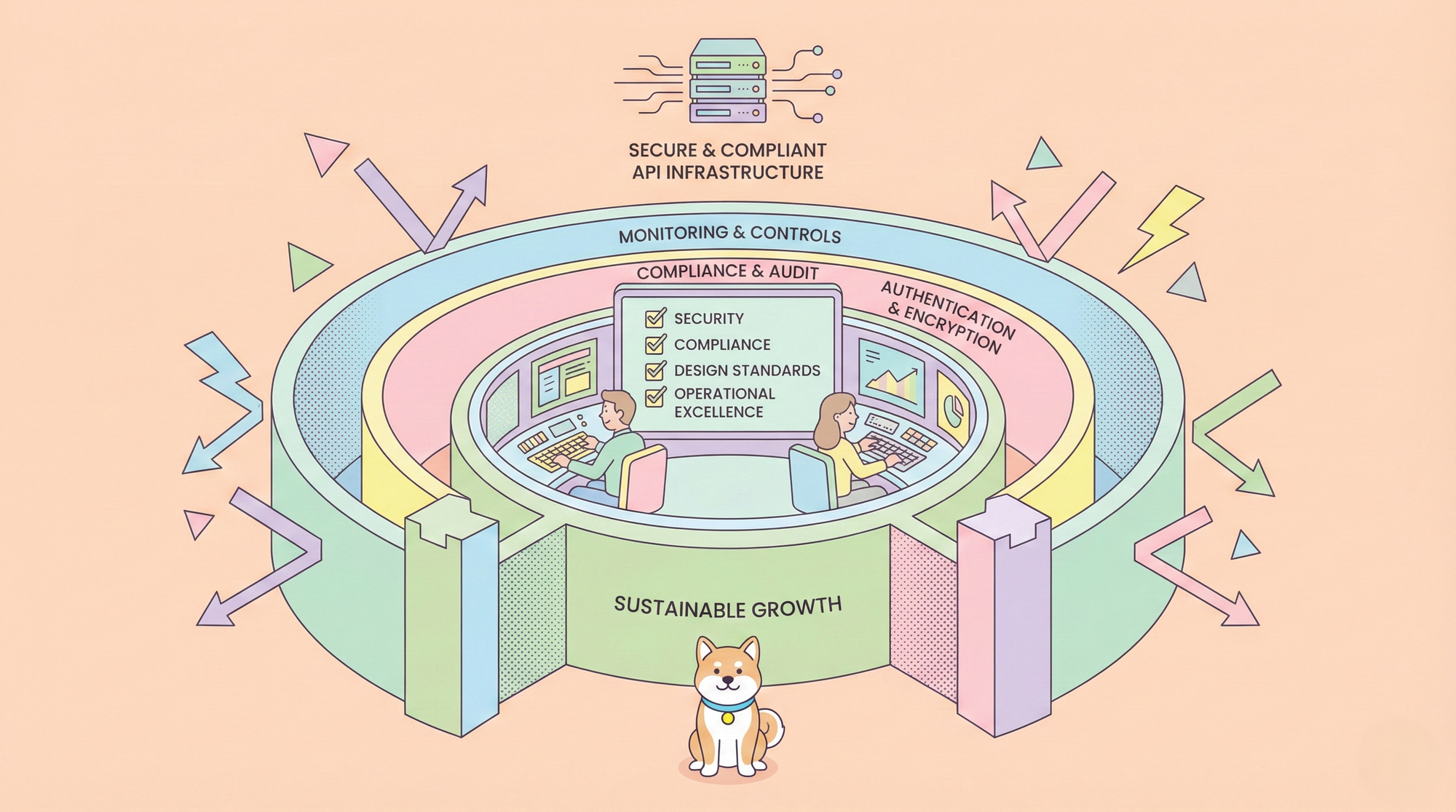APIs are no longer just a backend tool — they're the foundation of modern digital ecosystems. As we move into 2025, APIs continue to evolve rapidly, unlocking new capabilities for businesses and developers alike. From AI-driven interfaces to API security innovations, staying ahead of these trends is essential for teams building scalable, secure, and future-ready systems.
In this blog, we’ll break down the top 10 API trends for 2025 that are shaping how APIs are built, tested, and consumed.
Want an integrated, All-in-One platform for your Developer Team to work together with maximum productivity?
Apidog delivers all your demands, and replaces Postman at a much more affordable price!
Let’s get started!
1. API-as-a-Product (AaaP) is Going Mainstream
Once upon a time, APIs were just internal plumbing. Today? They’re products.
APIs are now:
- Monetized (think Stripe, Twilio)
- Branded with usage tiers
- Documented like customer-facing products
- Supported with SLAs and dedicated developer portals
This mindset shift called API-as-a-Product (AaaP) means you need to start thinking of your API consumers as users, not just integrations.
PRO TIP: Apidog helps you build beautiful, easy-to-use docs and developer portals that treat your APIs like first-class products.
2. REST is Great, but GraphQL & gRPC Are Growing
REST still dominates. But GraphQL and gRPC are growing fast especially in apps needing complex queries or high performance.
So, why the shift?
- GraphQL lets clients query only the data they need.
- gRPC is super fast for microservices and internal APIs.
- REST remains simple and universal for most public APIs.
This doesn’t mean REST is dead. It just means developers now have more tools in the toolbox. And knowing which to use when is becoming a vital skill.
Bonus: Apidog supports multiple protocols and helps you test different API formats without switching tools.
3. Async APIs Are on the Rise
As software gets more real-time (think Slack, Uber, IoT), asynchronous APIs are booming.
Protocols like:
- Webhooks
- WebSockets
- Server-sent events (SSE)
- MQTT
…are being used more than ever.
These allow systems to respond in real-time, without polling, improving speed and resource efficiency.
That’s why event-driven APIs are becoming crucial especially in sectors like finance, e-commerce, and gaming.
Tip: When designing async APIs, documentation and mock testing become extra tricky. Tools like Apidog help simulate event flows during development.
4. API Security Is Getting Serious
We’ve had a lot of high-profile API breaches lately. From T-Mobile to Peloton, weak API security has led to serious leaks.
The good news? Companies are waking up.
Emerging security trends include:
- OAuth 2.0 and OpenID Connect adoption
- Automated token expiration and rotation
- Zero trust principles
- API firewalls and runtime security
And API security best practice now dictates security from day one, not bolted on after launch.
Bonus: Apidog includes built-in support for secure API keys, OAuth flows and role-based access so your APIs don’t become an open buffet for attackers.
5. API Marketplaces are Exploding
Welcome to the API economy.
As APIs become commercial products, marketplaces like RapidAPI, AWS Marketplace and Azure Marketplace are booming.
These platforms help:
- Developers discover APIs fast
- API providers monetize their products
- Businesses scale integrations without custom builds
You no longer have to build from scratch you can assemble from public APIs and focus on unique value.
This also means your APIs might be consumed globally, so proper rate limiting, SLAs, and monitoring become non-negotiable.
6. Low-Code/No-Code Tools + APIs = Magic
There’s a huge surge in low-code and no-code development and APIs are the engines driving them.
Platforms like:
- Zapier
- Make (Integromat)
- Retool
- Bubble
…are leveraging APIs to let non-developers build powerful applications.
For developers, this means your APIs need to be simple, stable, and well-documented, since your end user might not write code at all.
Apidog makes your APIs self-explanatory with interactive documentation that’s friendly for both developers and no-coders.
7. AI-Enhanced API Development
Yup, AI is here too.
From autocomplete suggestions to natural language API documentation generation, AI is reshaping the dev experience.
Emerging capabilities include:
- AI-generated API mocks
- AI-assisted API testing
- Conversational API querying (e.g., “show me all users who signed up this month”)
Some platforms even let you talk to your APIs in plain English.
Apidog is already leaning into this with smart mock features and automated documentation AI in action, right in your dev environment.
8. The Rise of API Observability & Analytics
In today’s world, knowing that your API is “up” isn’t enough. You need observability.
This means tracking:
- Latency
- Errors
- Usage by endpoint
- Consumer patterns
- Geographical data
And beyond monitoring, analytics help you:
- Find popular endpoints
- Spot breaking changes
- Understand which versions are in use
API insights = business insights. If you’re not analyzing your APIs, you’re missing out.
9. API-First Development is the New Normal
Once considered niche, API-first development is now a standard practice in modern software teams.
Instead of writing code first and documenting later, teams now:
- Start by defining the API spec (OpenAPI/Swagger)
- Generate mocks and tests
- Build backend and frontend against the contract
This leads to faster development, fewer bugs, and better communication between teams.
Apidog fully embraces this with API-first design, mocking, and testing in one place no extra scaffolding needed.
10. OpenAPI, JSON Schema, and Interoperability
Finally, APIs are getting better at speaking the same language.
The OpenAPI Specification (OAS) is becoming the universal contract format. It enables:
- Tool interoperability
- Code generation
- Documentation generation
- Security policy enforcement
Meanwhile, JSON Schema is being widely adopted to validate request and response payloads, especially in RESTful APIs.
In the next few years, expect interoperability to be table stakes not a bonus.
And yes, Apidog supports OpenAPI and JSON Schema natively, helping you stay compliant while remaining productive.
How Apidog Helps You Ride These API Trends

Let’s be real keeping up with all these trends is exhausting without the right tooling. That’s why platforms like Apidog matter.
With Apidog, you get:
- Visual API design
- Mocking for both REST and async APIs
- Auto-generated, interactive documentation
- Built-in API security tools
- CI/CD integration for testing
- Real-time usage analytics
- Developer experience features like auto-mocking and role-based access
If you want to embrace the latest trends without burning out your team, Apidog makes it simple.
Download Apidog for free and future-proof your API strategy today.
APIs Are Evolving Fast, Are You?
We’ve come a long way from REST-only APIs with static documentation and manual testing. The API landscape is evolving fast and if you want to stay relevant, you have to adapt.
To recap, here are the top API trends to watch:
- API-as-a-Product mindset
- Growth of GraphQL & gRPC
- Asynchronous, real-time APIs
- Security-first API design
- The API marketplace boom
- No-code/low-code integrations
- AI-enhanced development workflows
- Observability and analytics
- API-first methodology
- Standardization with OpenAPI & JSON Schema
The good news? With tools like Apidog, you don’t have to juggle a bunch of services. You can embrace all these trends in one elegant platform.
Now is the time to level up your API game.



